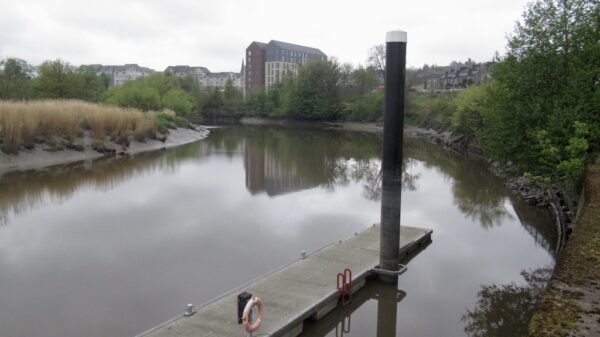Boating to Stirling
For most of its length the River Forth is a wide tidal estuary, with ample depth. The Head of Navigation is also the tidal limit, at the remains of an old weir, about 300 metres downstream of where the M9 crosses the river. In the city, the river is regularly used by canoeists and rowers, and there is a free to use pontoon provided by Stirling Council on the downstream outskirts of the city, which provides easy access to the city centre. Boats can, however, make their way for about a further mile upstream, albeit with no closer access to the city centre owing to loops in the river, and the photo right shows a recent cruise organised by the Royal Yachting Association in Scotland, with boats gathered just upstream of Stirling Rowing Club’s headquarters (the castellated white building shown in the photo), which is just downstream of the rail bridge. The river shallows a little further upstream, followed by the remains of the old weir.
[Photo by Richard Davies]


